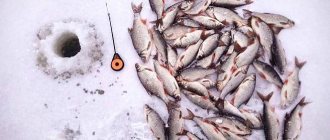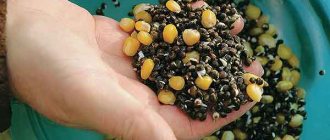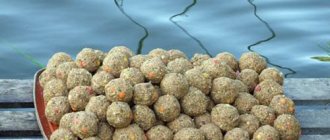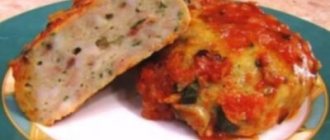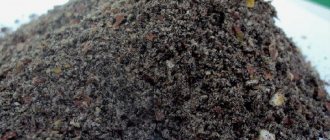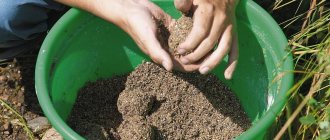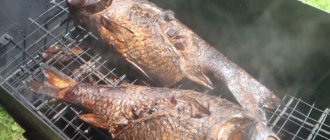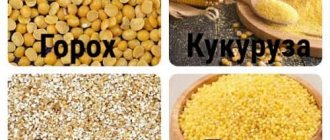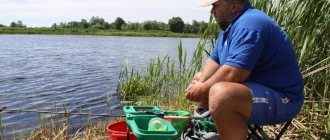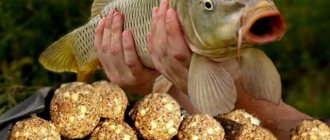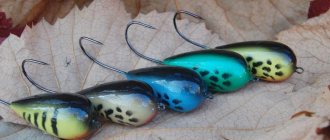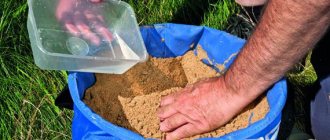Benefits of homemade bait
The difficulties of catching carp or common carp are associated with the fact that this fish is constantly moving in search of food and to a place of shelter. Therefore, only active fishing is suitable for it. In this case, you will have to feed not only the main place where hunting is carried out, but also several additional areas.
Important! Carp is distinguished by increased sensitivity and caution. Therefore, when fishing for it, be sure to maintain extreme silence.
You can buy bait or prepare it yourself. Each fisherman chooses which bait to use based on his preferences, beliefs, experience and capabilities. Among the purchased ones, we can recommend Dunaev Premium Carp Carp, Traper Big Carp, SENSAS 3000 Carp Extra Grosse.
- Homemade bait has a number of advantages, including:
- low cost - almost all components can be found in any kitchen;
- the ability to refine and supplement components in the field, depending on the tastes that the fish prefers;
- you can take into account the tastes of carp in a particular body of water;
- the uniqueness of the product, which increases the chances of attracting fish.
Bait for carp and carp: buy or cook yourself
For catching carp and carp, both store-bought bait and homemade bait mixtures are used. Both of these options have both disadvantages and advantages. Therefore, sometimes it is difficult for a fisherman to make a choice - to purchase finished products or prepare bait himself.
The choice is yours. However, first it will be useful to know how one option compares favorably with another. Let's start with ready-made bait mixtures. Their main advantage is their complex and maximally balanced composition (including amino acids and vitamins). After all, experienced specialists work on the production of store-bought bait. In this case, the achievements of ichthyologists and the opinion of the fishermen themselves are taken into account.
However, the above applies only to ready-made baits from well-known and trusted manufacturers. After all, unfortunately, some companies that produce bait mixtures for catching carp and carp do not use the best ingredients that the fish simply do not eat. In the end, there is no sense in such a lure. Quite the contrary.
You can buy ready-made bait that is suitable for both carp and carp
Therefore, when buying bait mixtures for carp or carp, you need to give preference to products from well-known manufacturers. Otherwise, counting on a good catch is in vain. Even if it is a paid reservoir with a lot of fish.
Naturally, that's not all. Ready-made bait has other advantages:
- There is no need to waste time and effort preparing it.
- Consistency and viscosity are easily adjusted by adding water or dry mixture.
- When not moistened, store-bought bait does not deteriorate even in warm conditions.
Main ingredients for bait
Carp is considered an omnivorous fish. Therefore, you can prepare complementary foods for him, consisting of various components. The main thing is that they should be washed away well with water and form a cloudy spot. It is advisable to season them with ingredients that enhance the smell and taste. These substances help spread the smell over long distances—several tens of meters—and attract more fish.
Find out how to pickle carp caviar.
The best ingredients for feeding carp include:
- breadcrumbs;
- porridge;
- wheat bran;
- worms;
- bloodworm;
- maggots;
- peas;
- cheese.
Blitztips
The bait should be prepared in advance, in the evening. The prepared mass should be mixed not only with ballast, but also with dry cereals. This will give additional time for the complementary foods to work.
Ready-made baits can be used not only directly for fishing, but also as bait. Over several days, the fish are systematically fed in the same places. The fish gets used to the place and time and goes out to feed without fear.
In conclusion, we suggest using a tricky one. The food is placed in a gauze bag. And then, very carefully, without unnecessary noise and splashes, in order to avoid scaring the fish, it is thrown into the water. The carp, attracted by the smell, easily finds the feeder and tries to get the food. Since the gauze holds the food, it is difficult for the carp to get enough to get enough. The carp's appetite and interest have been aroused, and now it actively begins to search and grab everything that the fisherman offers it.
What smell does carp like?
The attractiveness of the bait is increased by attractants (taste and smell enhancers) and flavoring agents (smell enhancers). Carp are attracted by different scents in different seasons. In summer - he loves honey, vanilla, chocolate, anise, caramel notes. At other times, the most attractive aromas for carp are: garlic, hemp, dill, fruit.
In cold weather, it is better to add shrimp and crab scents . If we talk about manufacturers of flavors, the following companies produce products for fishing for carp: Sensas (France), Dynamite Baits (Great Britain), Richworth (Great Britain), Traper (Poland). Among the attractants, the following are popular: Top Secret, Carp Spit, Berkley Gulp, Ecogear Aqua Liquid, Fish Hungry, Dry Blooder.
Important! When using attractants and flavors, you should strictly adhere to the instructions for use. You should not put too much of such additives in the food, as this can, on the contrary, scare away the fish.
Flavors, like bait, can be made with your own hands. To do this, prepare an alcohol extract. For example, pour a small amount of chopped dill into 100–150 ml of alcohol and leave the liquid in a dark place for 21 days. Then drain the alcohol and add glycerin and water (2 parts each from the volume of drained alcohol). Animal flavorings can be prepared in the same way.
The attractant is prepared as follows:
- Juice from canned corn or oil from canned sprat is added to vegetable oil.
- Drop fruit essence, garlic juice, almond oil into vegetable oil, stir in curry and vanilla.
- Add cocoa powder, grated chocolate, chopped grass, and vanilla to sugar syrup (dissolve 3 parts sugar in two parts water). Boil for 10–15 minutes and cool.
Useful tips
- Sometimes difficulties with feeding occur on some paid reservoirs. Here the fish are often accustomed to a certain food. Therefore, we recommend that you ask the pond owner or maintenance personnel in advance about the feeding features of carp or carp. This way, you will understand what kind of food the fish is used to, and you will be able to adjust the composition of the bait.
It is important when using bait not to overfeed the carp.
- The taste preferences of both carp and carp strongly depend on the time of year, water temperature and weather conditions. Do not forget about this under any circumstances. In short, flavors and dips with fruit, berry and sweet tastes should be added to the bait mixture if you fish in the summer, in warm weather and in warm water areas. Bait with natural and animal odors is more productive in spring and autumn, during cold weather and in cases where fishing takes place in cold water.
- When fishing for carp and carp, it is necessary to correctly calculate the amount of bait. Even though these fish have an excellent appetite and feed quite often and in large quantities, there is a risk of overfeeding them. Therefore, keep in mind that the feeding activity of all cyprinids is negatively affected by changes in water level, pressure fluctuations, changes in weather conditions, magnetic storms, and many others. etc.
- Don't forget about flavorings. The bait components or the mixture itself should be treated (impregnated) with dips, boosters, attractants, etc. It is not necessary to use purchased products. Anise, garlic, vanilla, honey, etc. are suitable for this.
A variant of bait for carp is presented in the video:
DIY bait for carp
The composition of the bait for the type of fish being described will be different. It depends on the reservoir and the fishing season. In the summer, they resort to using ground grain and cereals with the addition of feed for animals and birds, as well as sunflower cake or halva. There is no need to introduce proteins at this time . Spring and autumn bait should include food of animal origin (worms, maggots, bloodworms). The bait can be prepared by simply mixing several of the listed components, or use one of the recipes described below.
Did you know? Sensing the approach of danger, the leader of a school of common carp signals it to other fish with warning sounds - a series of characteristic cracks.
Salapinka
Salapinka or Salapin porridge is a simple and affordable bait, loved by fishermen.
For it you will need to stock up on the following ingredients:
- pearl barley (1 part);
- millet cereals (2);
- corn grits (2);
- barley groats (2);
- water (9);
- vanillin or vanilla sugar (1 packet);
- unrefined vegetable oil (1 tbsp.).
The porridge is prepared as follows:
- Pour water into an aluminum pan.
- Boil.
- Add pearl barley.
- Cook until done.
- Enter millet.
- Once it is ready, turn off the stove.
- Add vanilla and oil.
- Close the lid to infuse.
- After some time, make sure that there is no water in the porridge and that it has the right consistency.
Sweet summer bait
In summer, it is advisable to add sweet elements to the bait. This will enhance its effectiveness.
Making your own bait
The choice of bait is based on two aspects: firstly, the intended fishing location, and secondly, the time of year. The success of carp fishing depends on the proper use of complementary foods. He has an excellent sense of smell, which is what fishermen use to prepare complementary foods, often adding aromatic substances to the mixture.
Ingredients for plant foods include products such as: various cereals (wheat, rice, corn, pearl barley, semolina). Porridge should be cooked over low heat, slowly, until the grains thicken and completely swell. Rye or wheat bread can be a good addition or independent base. Many fishermen prefer to prepare dough, which is made with milk or water, wheat or oatmeal and plus aromatic additives, such as vegetable oil. A popular component of plant-based feeds is potatoes and cake. In general, each fisherman prepares and uses his own “author’s” recipes, tested in different bodies of water at different times of the year. Let's move on to practice.
What kind of bait can you use to catch carp?
Plants and animals can serve as bait for the described fish species.
The best herbal baits are:
- canned corn;
- cereal dough with vanilla or cinnamon flavor;
- potato;
- elodea;
- reed;
- cattail;
- raspberries;
- cherry.
In winter, it is good to catch carp using dung worms, maggots, bloodworms, chafers, crayfish meat, and shell pulp.
You can also use artificial bait:
- silicone fish;
- vibrotails;
- wobbler in the form of insects and fry;
- imitation of corn grains, dung worms, impregnated with taste and smell enhancers.
What kinds of baits are there and how they should work
Before making a bait mixture, you will need to understand what this bait and its individual ingredients are intended for. When preparing it, you need to take into account both the gear for catching carp and the fishing conditions, because for different cases its composition will be different.
- The goal of using bait is to lure the fish to a certain area at a certain time, and keep it there.
- It is recommended to use two-part mixtures, one composition includes large fractions to keep fish in a promising place, the other contains small fractions that create a cloudy trail at the fishing point.
Experts advise adding components to the bait that will serve as bait and be used on a hook.
There is another type of bait in the form of paste. Such mixtures are used when fishing for carp or other fish with a feeder in the current. In such situations, the mixture is made dough-like, and the carp absorbs this mixture from the feeders.
To separate small fish from the feeding point, bait for carp should consist of large components: barley grains, corn, peas, pellets and a variety of boilies.
Effective baiting of the place
If fishing is planned for 2-3 days, then you need to feed the fish in small portions and add more throughout the day. This will keep the carp interested. The fish will remain in the feeding area until it has eaten everything completely or is spooked by something.
Find out how to catch carp with boilies.
When fishing for one day, you should pour out a large portion at once so that it spreads like a spot on the water , and then add more bait as needed. It is better to introduce food 4-6 hours before casting the fishing rod. When using flavorings and attractants, so that the taste and smell do not become boring to the fish, they should be changed periodically.
So, before you go fishing for carp with a fishing rod, you should familiarize yourself with the features and recommendations for catching it, and also stock up on the right bait. You can purchase ready-made complementary foods in a specialized store or make it yourself.
What else can you feed carp and carp?
Not only bait mixtures can also be used as bait for catching carp (or its “relative” - carp). Some fishermen limit themselves to feeding with boilies and pellets, which have the following advantages:
- they can be used as a nozzle;
- do not spoil in the heat;
- take up little space;
- cut off bites from small fish and their presence at the fishing point (you just need to use boilies and large pellets);
- have a wide variety of tastes:
- keep fish close to bait for a long time.
Pellets can be used as bait or as a component.
Also, many carp fishermen feed carp and carp with fermented corn. Let us remember that fermentation is a special fermentation process during which corn grains acquire a unique and distinctive taste and aroma.
Moreover, both carp and carp respond very well to fermented corn. Especially when it is used as bait. The fact is that after fermentation, the acidity of corn increases. As a result, it is digested quite quickly in the fish’s body, increasing its appetite. It turns out that the carp or carp cannot get enough and begins to feed more actively, delighting the fisherman with regular bites.
Feeding tactics in spring
When fishing in the spring, you need to be prepared for the fact that you will have to wait a long time for carp and carp to arrive. First you need to make a starting feed, and then periodically add new portions to the fishing point.
The intervals between these “supplements” can be different - from 30-40 minutes to 3-4 hours. The shallower the depth at the fishing site and the more passive the fish, the less frequently supplementary feeding should be done. Frequent casting of new portions of bait in the spring scares off carp, especially if fishing takes place in shallow water.
